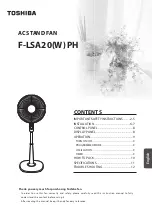
Operating instructions
W3G990-GZ01-03
Translation of the original operating instructions
4.2.6 Locked-rotor protection
Due to the locked-rotor protection, the starting current (LRA) is
equal to or less than the nominal current (FLA).
4.3 Connection in terminal box
4.3.1 Preparing cables for connection
Only strip the cable as far as necessary, ensuring that the cable gland is
sealed and there is no strain on the connections. For tightening torques,
see Chapter 3.1 Product drawing.
NOTE
Tightness and strain relief are dependent on the cable
used.
→ This must be checked by the user.
Fig. 1: Recommended stripped lengths in mm (inside terminal box)
4.3.2 Connect cables to terminals
WARNING
Live terminals and connections even with device
switched off
Electric shock
→ Wait five minutes after disconnecting the voltage at all poles
before opening the device.
;
Open the terminal box.
;
Remove the cap from the cable gland.
;
Only remove caps where cables are fed in.
Fig. 2: Fit the connectors in the terminal box
;
Fit the cable glands with the seals provided in the terminal box.
;
Route the cable(s) (not included in the scope of delivery) into the
terminal box.
;
Ensure separate routing of the supply cable(s) and the cables for
status contact and control interface. Depending on the requirements for
the end device, the physical separation of these cables in the terminal
box may be mandatory. Use the partitions inside the terminal box as
an aid to routing for this purpose.
;
First connect the protective earth "PE".
;
Connect the cables to the corresponding terminals. Use a
screwdriver to do so. When connecting, make sure the wires do not
splay out. Insert the strands until they meet with resistance.
Fig. 3: Connection of cables at terminals
;
There must not be any tensile stress between the terminal and the
cable gland. The cable must be provided with strain relief.
;
The cable glands must be tight.
;
Fit the terminal box cover, making sure that the sealing surfaces are
clean.
;
Screw in the four screws (for tightening torque, see Chapter 3.1
Product drawing).
4.3.3 Cable routing
Water must be prevented from reaching the cable gland along the cable.
NOTE
Damage caused by moisture penetration.
Moisture can penetrate into the terminal box if water is
constantly present at the cable glands.
→ To prevent the constant accumulation of water at the cable
glands, the cable should be routed in a U-shaped loop
wherever possible.
→ If this is not possible, a drip edge can be produced by
fitting a cable tie directly in front of the cable gland for example.
Fans installed lying flat
Make sure the cable is routed in a U-shaped loop.
Fans installed upright
When routing the cable, make sure that the cable glands are located at
the bottom. The cables must always be routed downward.
Item no. 57567-5-9970 · ENU · Change 210794 · Approved 2020-08-17 · Page 8 / 15
ebm-papst Mulfingen GmbH & Co. KG · Bachmühle 2 · D-74673 Mulfingen · Phone +49 (0) 7938 81-0 · Fax +49 (0) 7938 81-110 · [email protected] · www.ebmpapst.com

































